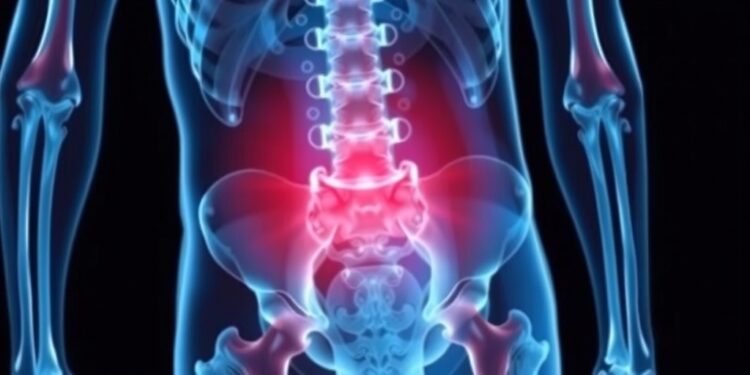
The U.S. Preventive Services Task Force (USPSTF) has made a critical update to their recommendations regarding osteoporosis screening, emphasizing the importance of proactive medical care, particularly for women aged 65 and older. This demographic’s risk of sustaining osteoporotic fractures is notably heightened, which can lead to devastating consequences such as loss of independence, psychological distress, and even mortality. Their recommendation signifies a pivotal move toward preventive healthcare, aiming to mitigate the potential health crises faced by aging populations.
In addition to targeting older women, the USPSTF has also acknowledged the necessity for screening in postmenopausal women under 65 who display an elevated risk for fractures as determined through comprehensive clinical risk assessments. This wider scope reflects a proactive stance in identifying those already predisposed to osteoporosis, thus allowing for timely intervention and management. The increased focus on early detection is paramount given the substantial implications of osteoporotic fractures on quality of life, healthcare costs, and recovery processes.
Interestingly, while the guidelines emphasize screening for women, they also highlight a significant gap in evidence regarding men. The USPSTF concluded that current research does not sufficiently illuminate the benefits and risks associated with osteoporosis screening in the male population. This calls for a more profound examination of the subject, as men, particularly older adults, are also susceptible to fractures and related complications. Furthermore, the absence of clear recommendations for this group indicates a pressing need for ongoing research into male osteoporosis, potentially reshaping the future of preventive health in this domain.
Osteoporotic fractures extend beyond physical impairment; they usher in a range of psychological issues as well. Individuals suffering from these fractures often experience despair and anxiety concerning their health and future capabilities. The loss of mobility or independence can lead to significant emotional distress, exacerbating mental health conditions that are already prevalent among older adults. This psychological distress is a crucial consideration, one that health professionals must address alongside the physical ramifications of osteoporotic fractures.
The substantial focus on preventive measures reflects a broader trend in healthcare that acknowledges the importance of early identification and management of diseases. The USPSTF’s systematic approach to preventive services stands out as an exemplary model for how medical guidelines can evolve with emerging evidence. This commitment to ongoing evaluation and adaptation ensures that healthcare practices remain relevant and effective in addressing the challenges posed by various health conditions, including osteoporosis.
Furthermore, the implications of the USPSTF recommendations extend into social spheres. Families and communities are impacted by the health of their older members, and strategies that support preventive health can lead to stronger community resilience. The prevention of fractures through early screening can reduce the socioeconomic burden that occurs when individuals require long-term care or rehabilitation following severe fractures. Communities equipped with knowledge regarding osteoporosis can better mobilize resources to aid vulnerable populations.
In light of these recommendations, healthcare providers are encouraged to engage in thorough dialogues with patients about their personal risk factors for osteoporosis. These conversations should transpire within the context of an interdisciplinary approach, where dietitians, physiotherapists, and mental health professionals collaborate to provide comprehensive care. Initiating conversations about lifestyle modifications, nutrition, and exercise—elements all fundamental to bone health—can further enhance the effectiveness of the recommended screening measures.
In summary, the USPSTF’s updated recommendation for osteoporosis screening represents monumental progress in preventive healthcare. By focusing on women aged 65 and older, as well as at-risk postmenopausal women under 65, the task force is paving the way for a more informed and proactive approach to managing osteoporosis. Nonetheless, the evident lack of recommendations for men underscores the necessity for further studies, which could lead to future guidelines that encompass both genders equitably.
Importantly, this new stance by the USPSTF encourages a shift in thinking within the medical community. It compels practitioners to prioritize preventive measures that encompass not just physical health, but also emotional well-being. Recognizing that fractures carry far-reaching implications for both individual patients and the healthcare system as a whole is crucial for fostering a culture of health that extends beyond mere treatment and into the realm of proactive prevention.
Implementation of these guidelines is yet another step toward enhancing the quality of life for older adults. The proactive identification of at-risk individuals facilitates timely intervention, potentially preserving the independence and mental well-being of those who might otherwise face a grim future marred by fractures and their ensuing challenges. With ongoing education and awareness efforts spearheaded by healthcare professionals, the potential for a healthier, more informed population is within reach.
Moreover, this development invites a reevaluation of how society perceives aging and related health conditions. By destigmatizing conversations around osteoporosis and openly discussing preventive strategies, a more supportive environment can flourish, driven by empathy and understanding. The hope is that this new narrative will empower individuals, encouraging them to actively participate in their health journeys.
In conclusion, the USPSTF’s updated recommendations on osteoporosis screening shine a spotlight on the vital interplay between prevention, awareness, and intervention, all of which are critical in addressing the complexities associated with aging populations and their unique health challenges. As the conversation around osteoporosis continues to evolve, so too will our collective approach to fostering healthier, happier aging.
Subject of Research: Osteoporosis Screening Recommendations
Article Title: New Recommendations for Osteoporosis Screening by USPSTF
News Publication Date: October 2023
Web References: USPSTF Newsroom
References: doi:10.1001/jama.2024.27154
Image Credits: JAMA
Keywords: Osteoporosis, Preventive medicine, Risk factors, War of health, Aging, Healthcare recommendations, Psychological distress, Women health, Men’s health, Bone density screening.





